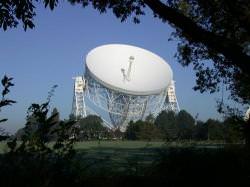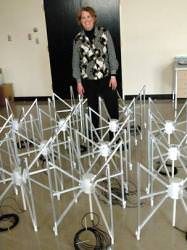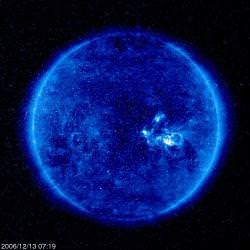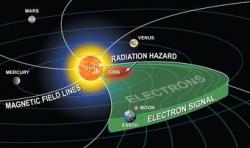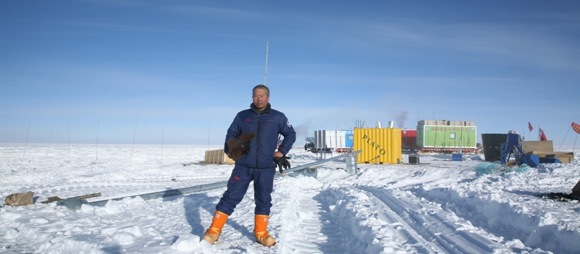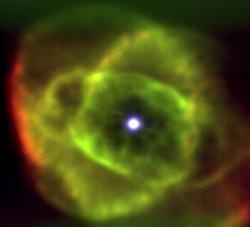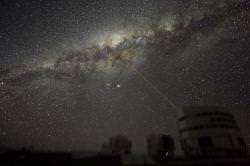OK, so there have been some strange things going on between us Earthlings and aliens lately. The deep-space Pioneer and Voyager probes carried images and artefacts of our culture into the cosmos decades ago. This plan has now been upstaged by the Deep Space Network transmitting a Beatles tune in the direction of the star Polaris. Both are different methods in an attempt to achieve the same thing – to contact alien civilizations. Extraterrestrials might even be trying to communicate with us by playing around with stars or blasting neutrinos at us…
But, in the next episode of this epic saga, as the human race feels more and more alone in a seemingly lifeless, but expanding universe… [break – this programme will be continued after a message from our sponsors]
Advertising is everywhere. It comes in many shapes and sizes, and in many forms. I just deleted four pieces of spam in my email account (one trying to sell me non-prescription pain killers, one notifying me that I have won the Russian lotto and another two with subjects I’d rather not repeat), I can hear an ad on the radio chatter (something about double-glazed windows), on my desk I can count ten magazine ads, newspaper classified ads, business cards and logos, all set out to do pretty much the same thing: to sell a product and, ultimately, to make money. Advertising is so embedded into our commercial society, it can be difficult to work out what is advertising and what isn’t.
Now it seems there is another kind of advertising on the horizon: Space Spam.
As UK physics and astronomy researchers have experienced recently, the problem with scientific research is that it mainly depends on government funding. Government funding comes and goes and can depend on who is in power and who isn’t. To avoid this, many researchers leave academia in search of better pay in industry. There is nothing wrong with this choice, but often academic institutions and universities lose their top minds to better financial conditions elsewhere.
In an attempt to save the beleaguered astronomy community in the UK, astronomers have come up with an intriguing idea. To rescue the world famous Jodrell Bank Observatory in Cheshire, astronomers intend to transmit adverts into space. This is truly the final frontier for terrestrial advertising, but is it possible that British scientists have finally lost their marbles? How can we expect alien races to pay attention to our attempts at selling them Nacho Cheese Doritos? If they did buy our products, I wouldn’t want to be in charge of the shipping department…
But there is a very serious reason for this off-beat plan. The UK is currently undergoing a funding crisis as the main funding body for UK physics and astronomy struggles to fill a £80 million ($160 million) hole in their finances. No help has been offered by the British government. This new fund-raising scheme is already attracting a lot of attention. The snack manufacturer Doritos has stepped in, donating an undisclosed sum in exchange for transmitting their ad. Many more companies are expected to follow suit. The publicity from helping out struggling observatories seems to be enough for big companies wanting to get involved (after all, they won’t be expecting extraterrestrial orders for at least 84 years).
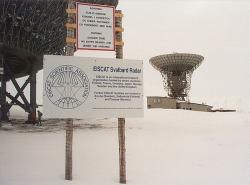
The signal will be sent to the Ursa Major constellation some 42 light years away by the European Incoherent Scatter Radar System (EISCAT) in Svalbard, located in the High Arctic. EISCAT is more commonly used to measure emissions from the aurora and ionospheric dynamics. It can also be used in conjunction with other EISCAT installations in Sweden and mainland Norway to track the velocity and composition of the solar wind. Now, it seems, the powerful radar transmitter will be used to shoot commercials into space.
The first transmission will be 30 seconds long and members of the public will be invited to participate. TV advertising will also be aired in support of the project. If anyone thought UK researchers were going to stay quiet and accept the latest round of financial turmoil, they’d be wrong. Scientists and the public, backed up by advertising revenue, are about to make a very big noise.
If the Beatles tune didn’t agitate the aliens, an enforced ad break probably will, let’s just hope they are sympathetic to the UK funding crisis (and want to make a donation).
Source: Doritos.co.uk, Jodrell Bank Observatory press release

